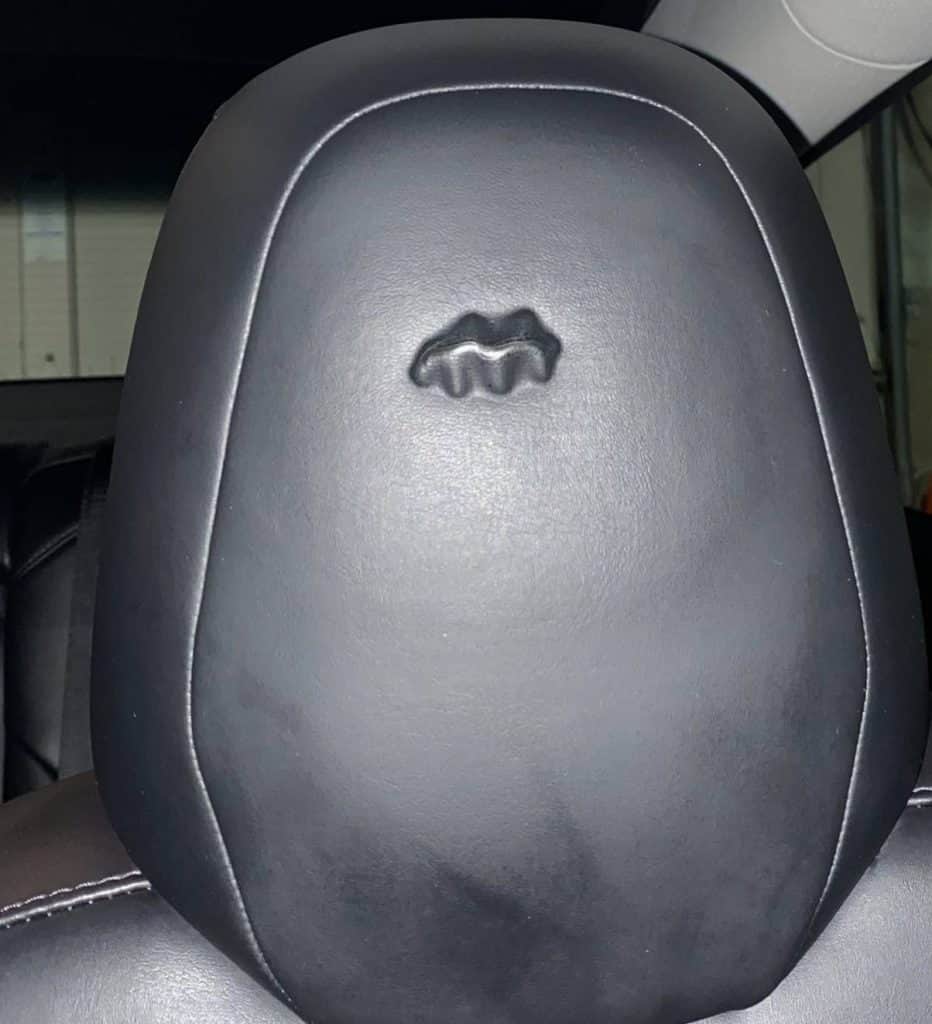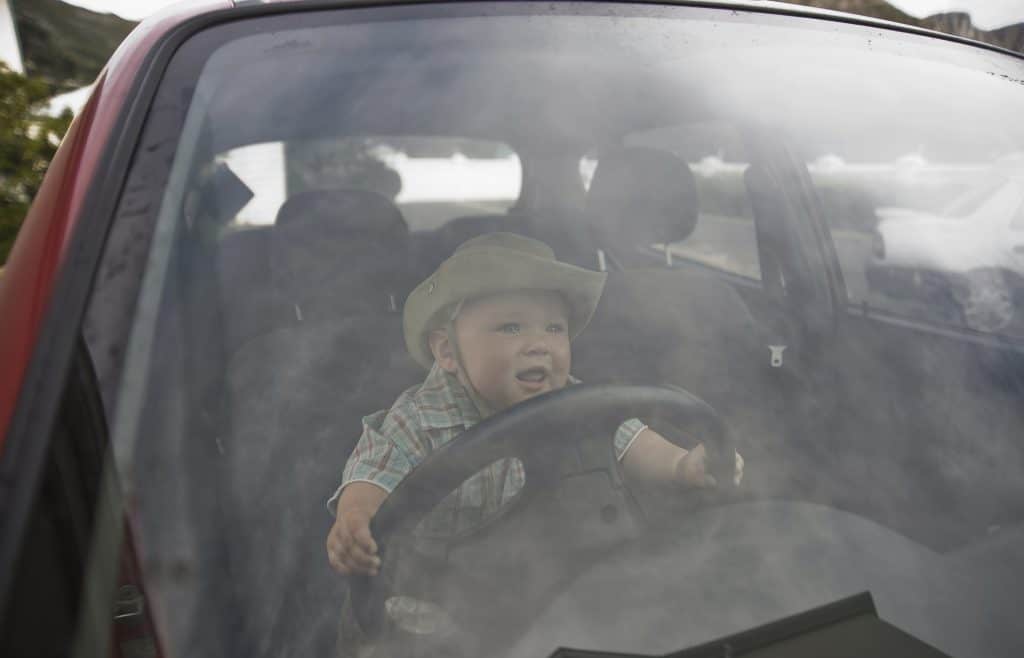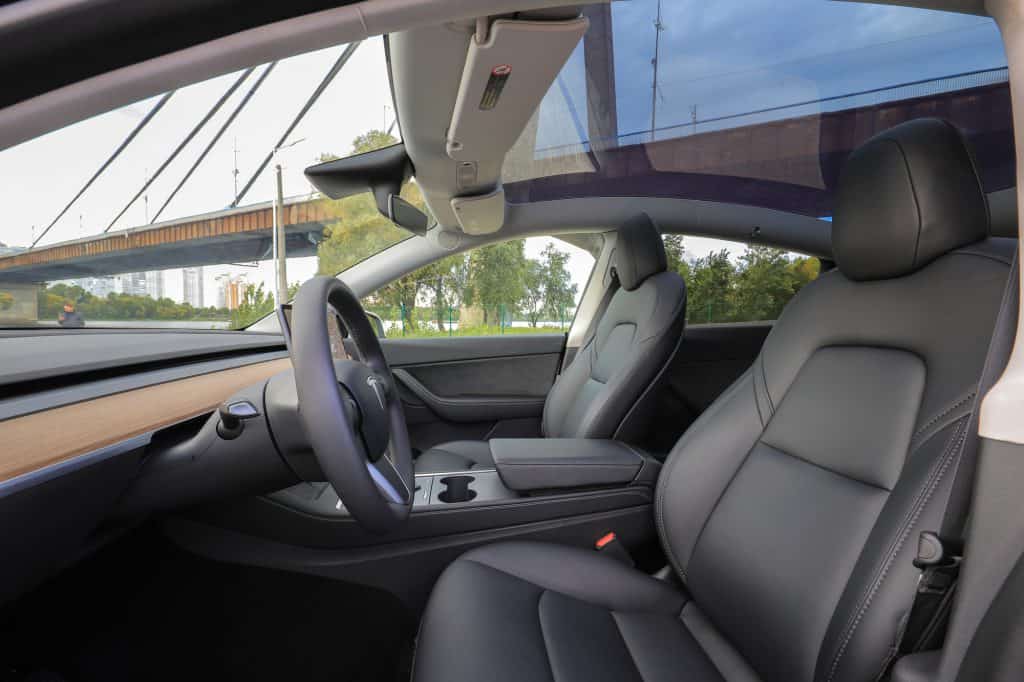When you invest in a Tesla, you’re spending quite a lot of money and therefore likely expecting a high level of quality to shine through. It is therefore very frustrating to discover that after having the car for a relatively short time, a part that is supposed to be durable and lasting, such as the leather on your seat headrest, is already starting to bubble or wear away.
Some Tesla owners have noticed and reported on Reddit that the unsightly wearing away of their headrests has started within 2 years of owning their Tesla car — unthinkable in a model that markets itself as a high-end, luxury electric car. If it’s not a worn-away kind of damage, then it might be unsightly bubbling that looks as though some alien creature is growing beneath the leather surface.
When you see that there are examples of JDM import vehicles from the 1990s with seemingly flawless leather and fabric upholstery, it’s even harder to accept that a Tesla Model 3 from 2020, for example, should be exhibiting such terrible wear and tear.
But is it really Tesla’s fault? In today’s blog we’re going to explore in more depth the reasons behind this apparent defect, and what Tesla drivers might be able to do to stop it from happening to them.
Headrest Wearing Away and/or Bubbling – Is it Tesla’s Fault?

Let’s dive in first by looking at where most of the blame should be portioned. The immediate reaction of many people either experiencing or witnessing this problem via online forums has been to point the finger at Tesla, decrying their obviously poor-quality choice of upholstery leather. However, a little additional research would show you that this is an unfair characterization, in fact.
As it happens, a number of other factors have been shown to cause the problems highlighted on the Reddit threads like the one we shared further above:
Shampoo and Hair Products
One of the top culprits shown to be responsible for this kind of wear and tear has actually been certain kinds of shampoo and other hair products, including hair spray. We’re not just talking about any old shampoo, however, but usually those shampoos that are prescribed or otherwise stronger to combat things like chronic dandruff.
The particular offending ingredient in shampoo is selenium sulfide, which is the worst single ingredient for causing damage to leather upholstery. However, another key ingredient to watch out for is alcohol, but that is more common in cleaning products, which we’ll cover further below.
When it comes to hairspray, it’s an interesting story because there have long been many people who actually insisted that hairspray could be good for removing stains from leather car seats and virtually any other leather surface.
In reality, the alcohol found in most hairspray makes it actually quite damaging to use as a cleaning product — however effective it seemingly appears at removing stains.
On top of that, hairspray tends to leave adhesive residue on the seats, which can attract more dust and other abrasive particles that can actually accelerate the deterioration of your Tesla headrest upholstery.
Hat and Headgear

In a similar vein to hair products, your choice of headwear might also have an impact on your headrest material. Do you wear a cowboy hat while driving? How about a baseball cap worn backwards?
The rim/peak of these hats will rub against the headrest as you’re driving – assuming you’re seated in a typical position. This can cause thin line-shaped abrasions which then lead to worse wear and tear over time.
If you sit back in your chair while wearing different hats, then the materials might also have a marked effect on the leather if they’re rubbing against the upholstery a lot. In particular harder, thicker materials like denim could cause problems.
Hats made of softer, lighter materials are unlikely to have these undesired effects, but in the end it also depends how much you wear them in the car and if and how they are impacting the headrest as you do.
Sunlight
Finally, the old and better-known enemy of your car’s leather upholstery is direct sunlight and its UV radiation. What’s the weather like in your area? And where do you normally park your car? Do you keep that lovely Tesla in a shaded spot, or do you let it sit baking under those UV rays? In these conditions, leather will dry and crack, leaving it more vulnerable to all kinds of premature wear and tear.
What Can Tesla Owners Do to Prevent This?

Avoiding Certain Hair Products and Headgear
The first thing to do is to reflect on your choice of hair products, particularly those that contain selenium sulfate or alcohol. Another ingredient to watch out for is acetone, which is found in many kinds of cosmetics for its properties as a denaturant and a solvent.
Do you also frequently color your hair? Hair dye is another commonly used hair product that leather upholstery really does not get along with. If you have invested in beautiful white leather for your Tesla interior, then you don’t want to get any trace of hair dye on that headrest, because it will be almost impossible to remove, or at least seemingly impossible.
When it comes to headgear, it’s better for you if you just remove whatever hat you’re wearing while you’re driving. You won’t need it to keep you warm if your heating system is working properly, and it seems that aside from making you look a certain way to outsiders, it only has bad impacts on your headrest.
Protect and Condition the Leather
Another preventative measure that can be taken is to treat the leather upholstery with an appropriate product about once every three months. This will ensure that the leather doesn’t dry or crack. On top of that, you should take the time to apply some leather top coat or other protective product. Big brands like Chemical Guys, Leather Hero, and others all have products that you can use:
Keeping the leather conditioned and protected will at the very least greatly slow down the rate at which natural wear and tear can take place. You should also do this, and possibly more often, if you have no way to avoid parking your car in direct sunlight for long periods of time. Alternatively, look into a windshield sun protector to add stronger degrees of reflective protection for the headrest and the rest of the interior leather.
Replacing the Headrest
Finally, what if the damage is already done? Well, in bad cases the best bet will be to replace the headrest, which will cost about $300 if you have to pay for it yourself. Even while it isn’t technically to blame for the problem, Tesla has offered free replacements in the past as a one-time gesture of good will.
If you fancy replacing the headrest yourself with a decent second-hand unit, you can get one on eBay for anywhere from $80 to $200 depending on the age, model and condition.
If you notice this happening quite quickly after purchasing the Tesla, there’s a good chance — but not a guarantee — that Tesla will help you out and replace the headrest.
At the same time, however, they will draw your attention to the real culprits, and offer additional advice like wiping down the headrest daily with a Clorox wipe or similar products to remove residues of above-mentioned chemicals that can cause the leather to wear and blister.
How Serious is This Problem?

It doesn’t appear to have reached any kind of automotive “pandemic” level of commonality, which indicates that for the majority of people out there, this won’t be a problem at all. What’s more, even if one’s headrest has been worn away and become unattractive, that’s the worst thing that one can truly say about it.
What we mean here is that at the very least a worn headrest doesn’t present any immediate safety or functionality issues for your Tesla vehicle. It doesn’t impact the key systems or safety features, nor the drivability. Even the main structural integrity of the headrest as a supporting instrument to help your head and neck is pretty much unaffected until the wear and tear starts to run a lot deeper.
Therefore, it’s important to point out that while this is a genuine aesthetic complaint, it’s hardly a serious problem that Tesla drivers in general should be worried about. It could well be that Tesla might want to invest more money in more resistant materials that still offer the same softness and luster that their current upholstery does and that people generally love.
We hope that this blog piece offers Tesla owners some insight into how to prevent this issue, but also reminds them that it’s not the end of the world if it has already happened.
2 comments
It’s not leather it’s a polyurethane product. The issue is very broad in various degrees. This is exhibited well in my model 3, with 6000 miles on it parked in a garage, meanwhile the vehicle has overhead screen and rear tinting. Funny enough, none of my Audis (A8,A6,A4) nor my Lexus which had 41,000 miles when I sold it, exhibit such an issue. Clearly the materials are sub-standard.
Tristan, I appreciate your share on the issue of upholstery leather “bubbling”. In my case, it is the center console where I normally place my elbows while driving. I believe it may have been caused by my hand lotion I apply to my dry elbows.
With that said, the leather quality of Tesla need to be improved from their suppliers.
Is there still a fix to repair these bubbles? I wish I can send you a photo.